Rudolph Wendelin, Arlingtonian and artist for the U.S. Forest Service, was Smokey’s “caretaker” for decades. Celebrate Smokey’s birthday by learning about the artist that made him the bear he is today.
Smokey Bear turned 80 this month!
The beloved fire safety icon was created by the U.S. Forest Service during World War II, when wood was a particularly precious natural resource needed to fuel the war effort. To combat the prevalence of human-caused forest fires, the Forest Service established the Cooperative Forest Fire Prevention (CFFP) program in 1942. The CFFP adopted Smokey as its official symbol two years later when artist Albert Staehle created the first depiction of a caring, protective, hat-wearing bear named Smokey.
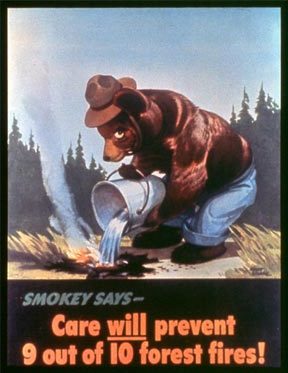
The first Smokey Bear poster created by Albert Staehle, 1944.
Many artists followed Staehle in depicting Smokey Bear. Prominent among these was Rudolph (Rudy) Wendelin, whose paintings of Smokey spanned his career with the Forest Service and continued long after his retirement in 1973. Wendelin softened and humanized Smokey's features, making the character more appealing to children, to whom much of the fire prevention campaign was directed.
Born to Austrian immigrants in 1910, Wendelin grew up in Ludell, Kansas, and attended public school in Herndon, Kansas. He began drawing at an early age and was soon earning prizes for his cartoons at county fairs.
After dropping out of the University of Kansas during the Great Depression, Wendelin was hired as a draftsman for the Forest Service regional office in Milwaukee, Wisconsin. He started drawing maps, manuals and guides for the Civilian Conservation Corps (CCC), a New Deal government work relief program. When his exhibits of CCC camps and wildlife conservation projects drew national attention, Wendelin was transferred to Washington, D.C., in 1936.
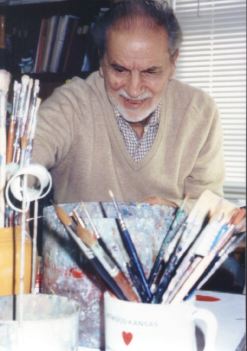
Rudy Wendelin, among his paint brushes, date unknown. From the Sierra Club website.
After a stint as a Navy artist during World War II, Wendelin returned to the Forest Service in 1946 and was given responsibility for the Smokey Bear project. He went on to create thousands of Smokey depictions that highlighted natural resources, conservation and forest fire prevention.
Wendelin made Smokey a household name, distributing artwork across the country, hosting talks at schools, and creating ads for newspapers, radio, and television. His work earned him many awards, including the Medal of Honor presented by the Daughters of the American Revolution, the Horace Hart Award from the graphic arts industry, and both the Silver and Gold Smokey Bear Awards from the U.S. Department of Agriculture —which he himself had designed.

“Nature’s Gold Medal Winner.” Painted by Rudy Wendelin in 1988. From the USDA National Agricultural Library Special Collections.
While Smokey Bear’s residence was in D.C. (at his very own zip code, 20252), Wendelin lived across the Potomac with his wife Carrol Bergman at 4516 N. 7th Street in Arlington.
Outside of work, Wendelin was an active board member of Our Savior Lutheran Church and painted religious themes in addition to landscapes and cartoons. He marched alongside his wife in the 1963 March on Washington for Jobs and Freedom as a member of the Lutheran Human Relations Association of America.
In the 1970s, Wendelin also devoted his artistic abilities to protesting the construction of Interstate 66 in the name of protecting his community from automobile pollution and overreliance on fossil fuels. Writing frequently to the editors of the Northern Virginia Sun, he passionately decried what he saw as the shortsightedness of the I-66 project regarding environmental impact.
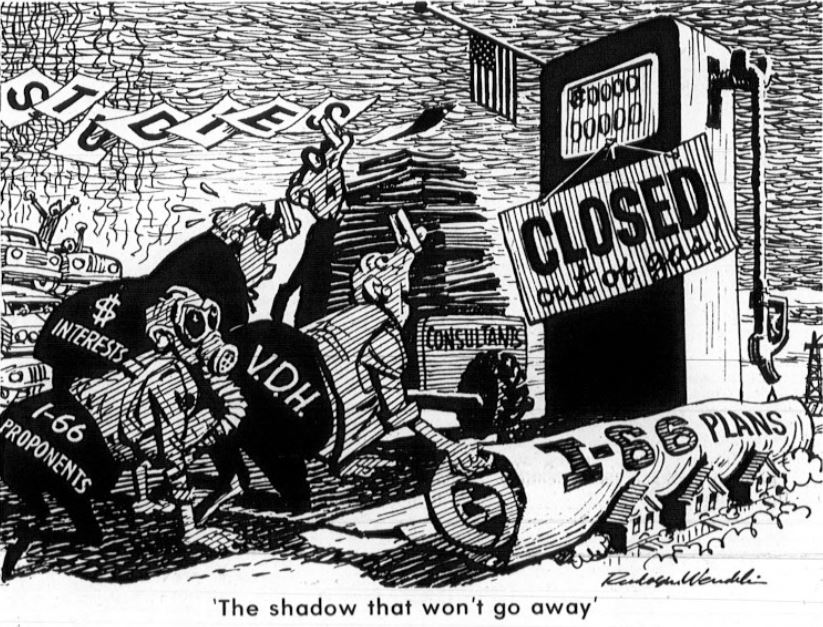
A political cartoon by Rudy Wendelin on the proposed plans for I-66. Published in the Northern Virginia Sun, August 14, 1973.
Wendelin worked with community organizations like the Arlington Coalition on Transportation (ACT) to envision more sustainable alternatives to I-66. He drew up designs that emphasized public transportation, walkability and green space. After much debate, the highway was built and opened in 1982. But Wendelin’s illustrations offer a glimpse into Arlington as the artist and environmentalist imagined it could be.
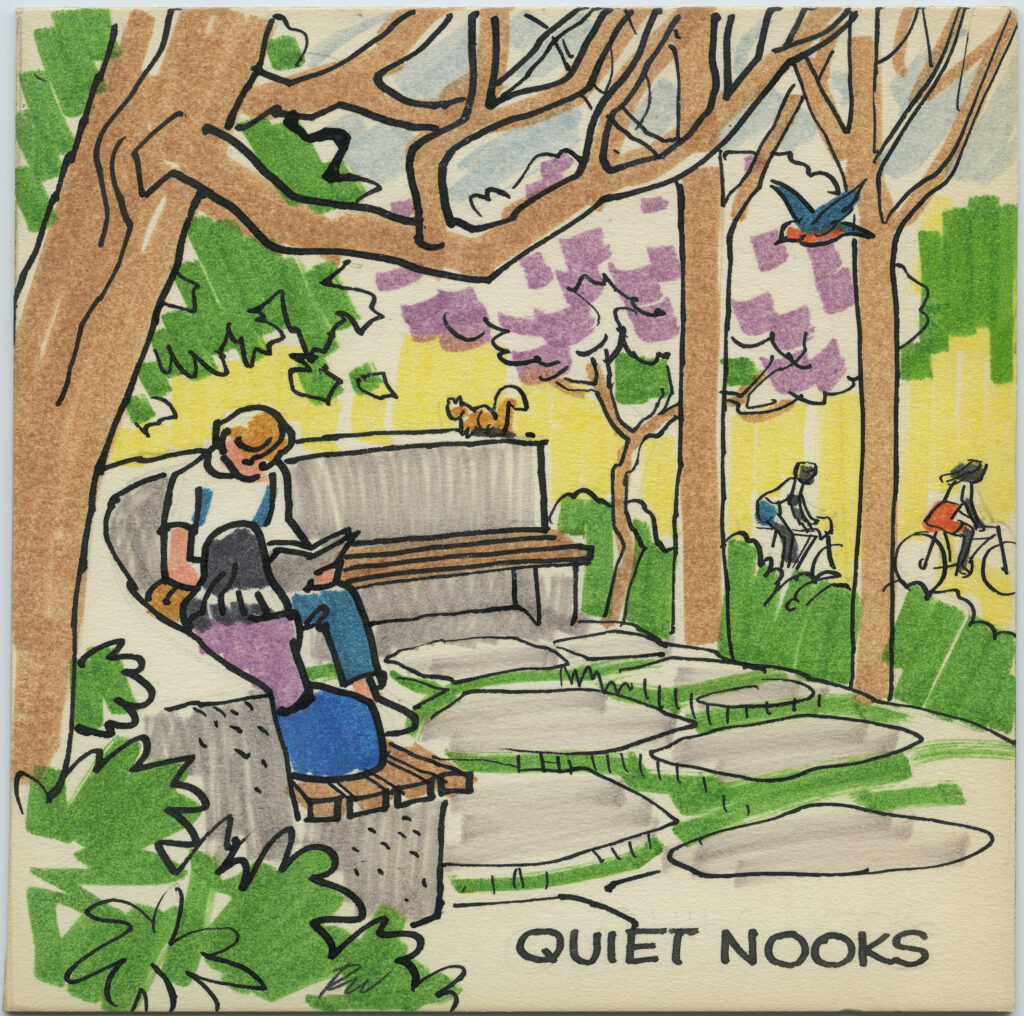

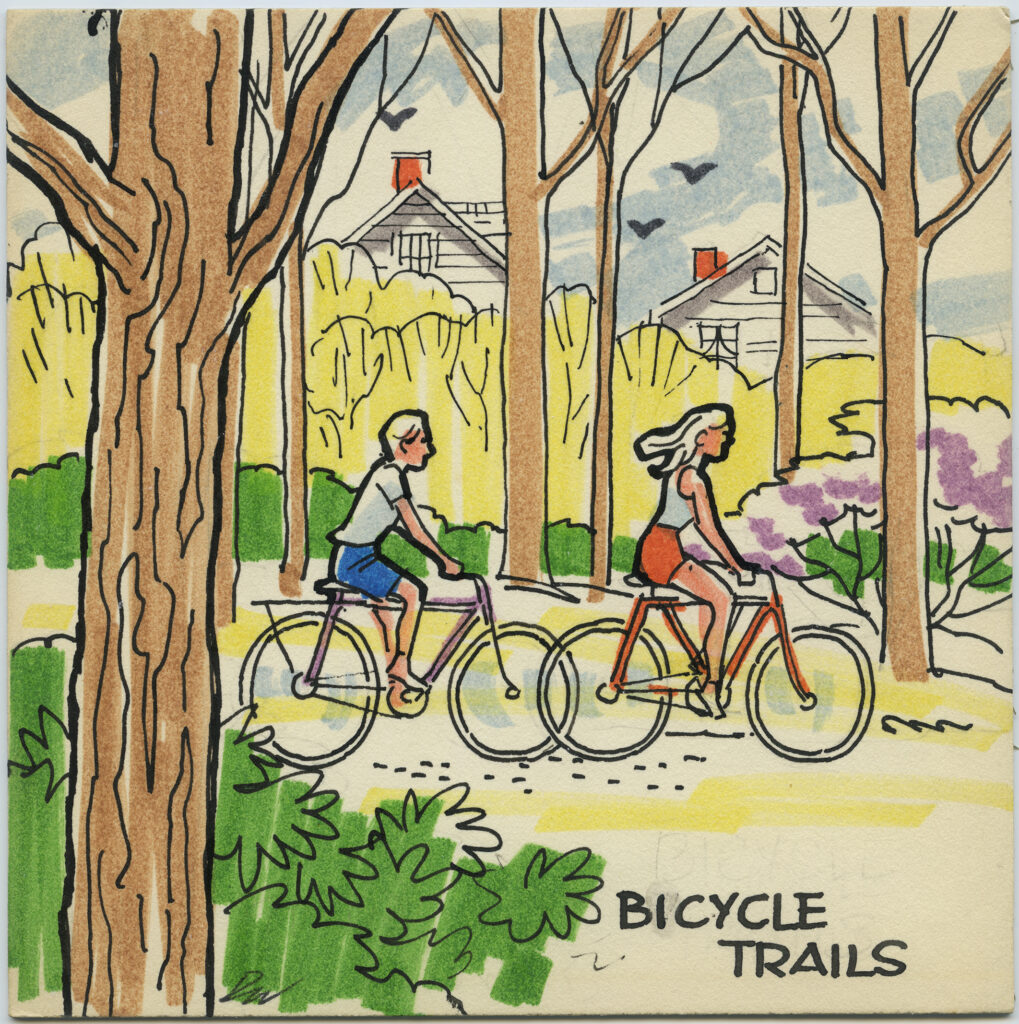
Three of ten colored sketches done by Wendelin depicting ACT proposals for the I-66 corridor. From RG 379: Arlington Coalition on Transportation (ACT) Records, 1958-2001.
In both his professional and personal life, Wendelin used art to communicate the importance of preserving nature. His legacy lives on, most of all, in the enduring and endearing figure of Smokey Bear.
Sources:
- Inventory of the Rudolph Wendelin Papers, 1930 - 2005 - Forest History Society.
- Lawter, William Clifford. Smokey Bear 20252: A Biography. Lindsay Smith Pub, 1994.
- Letters to Smokey Bear Reveal Promise of Hope for the Future (usda.gov).
- Nature's Gold Medal Winner (usda.gov).
- The Northern Virginia Sun, September 9, 1963.
- The Northern Virginia Sun, August 14, 1973.
- RG 379: Arlington Coalition on Transportation (ACT) Records, 1958-2001.
- Rudolph Wendelin (1910-2000) (sierraclub.org).
- Story of Smokey (smokeybear.com).
Help Build Arlington's Community History
The Charlie Clark Center for Local History (CCCLH) collects, preserves and shares resources that illustrate Arlington County’s history, diversity and communities. Learn how you can play an active role in documenting Arlington's history by donating physical and/or digital materials for the Center for Local History’s permanent collection.
Do you have a question about this story, or a personal experience to share?
Use this form to send a message to the Charlie Clark Center for Local History.
Center For Local History - Blog Post Message Form
Do you have a question about this story, or a personal experience to share? Use this form to send a message to the Center for Local History.
"*" indicates required fields